Birds of a feather
For the members of the Stanford Birdwatching Club, campus outings offer ample opportunities for glimpsing rare species and a special kind of camaraderie.

Maya Xu, front left, Adam Burnett, back left, and members of the Stanford Birdwatching Club on a recent trip to Merced National Wildlife Refuge. (Image credit: Courtesy Maya Xu)
Every fall, flocks of red phalaropes leave the Arctic and migrate thousands of miles south where they spend most of the year at sea. According to Adam Burnett, president of the Stanford Birdwatching Club (SBC), the phalaropes, which can also swim, are a rare sight because they live far from shore.
“We found one at Lake Lagunita during one of our club trips last winter, which was very exciting because it was the first time one had been seen on Stanford’s campus,” Burnett said, adding that the birds had been spotted elsewhere in Northern California throughout the season.
“It’s possible they were blown inland by the winter storms,” he said.
The rare sighting was just the kind of discovery the club members hope to make when they set out on a birdwalk.
“I’ve probably seen 150 different species on campus,” said Burnett. “There’s a lot to be found.”
Go bird or go home
For the Stanford bird watchers, the activity is a chance to get outdoors and enjoy a shared experience of nature. Several times each quarter, the group ventures across the Farm or to an off-campus location with binoculars and cameras, seeking sightings of our feathered friends. Burnett, a fourth-year PhD student in Earth system science, said that while some species are regularly found at Stanford, others only visit during certain times of the year.
“One of the reasons birds are so attractive to so many people, including scientists, is because they’re so accessible … they live on every continent in the world, and they’re so charismatic.”
—Maya Xu
“Sometimes you have to really look hard to find rare birds because the seasons change and birds migrate,” he said.
The SBC – whose motto is “Go bird, or go home!” – was started around 10 years ago and fell mostly dormant during the pandemic. The group frequents such campus locations as the Dish, Lake Lagunita, Jasper Ridge Biological Preserve, and the Arizona Garden. At least once a quarter, they’ll head off campus to Point Reyes, Pinnacles National Park, Merced National Wildlife Refuge, or another local destination. Membership fluctuates from year to year, and although the group is officially a student club, they are open to all Stanford affiliates, including faculty and staff.
The group has logged sightings of 275 species on the citizen science platform eBird since 2015, and they have created a thriving online community, including a popular Slack workspace where members discuss birding, plan trips, help each other identify birds, and share sightings.
“I encountered a pair of Downy Woodpeckers – an adult male feeding a young bird – across the street from Ray’s around 5 p.m. today!!” wrote Mischa Rosenberg, a teacher at Bing Nursery School, on the #sbc-spotted channel.
“I think I just saw/heard a hooded oriole near the green library entrance and path towards engineering quad? it was bright orange yellowish and black :o! tried to snap a pic but it flew away into a palm tree…,” wrote Vicky Chan, GSE MS ’22.
It’s also a space for birdwatchers to offer advice.
“If you notice poop stains on the pavement under a tree on campus, look up – you might see a Black-crowned Night-Heron!” Burnett wrote after spotting one along the east side of Meyer Green a few weeks ago.
While birdwatching is generally a cordial and casual activity, the club’s members aren’t opposed to some friendly competition.
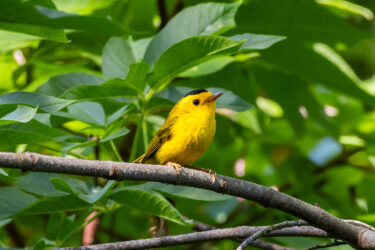
Image credit: Maya Xu

Image credit: Maya Xu

Image credit: Zihan Wei

Image credit: Maya Xu
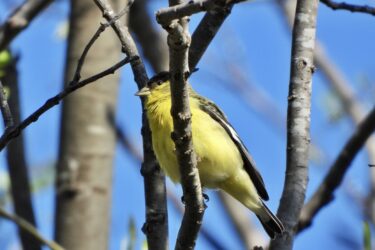
Image credit: Zihan Wei
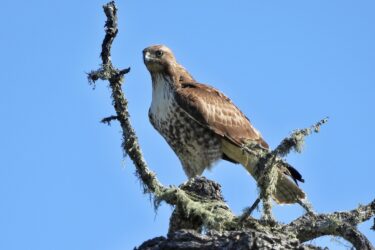
Image credit: Zihan Wei
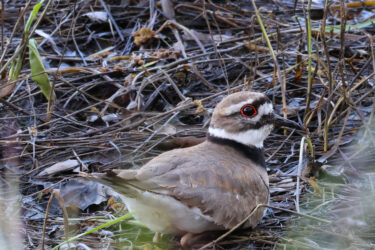
Image credit: Maya Xu
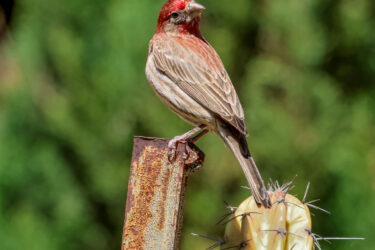
Image credit: Maya Xu
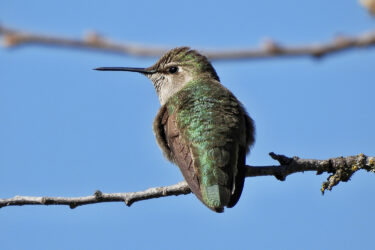
Image credit: Zihan Wei
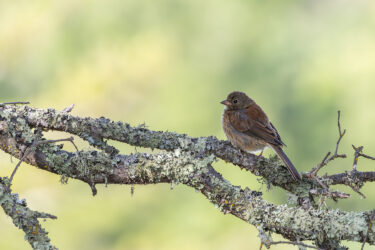
Image credit: Maya Xu
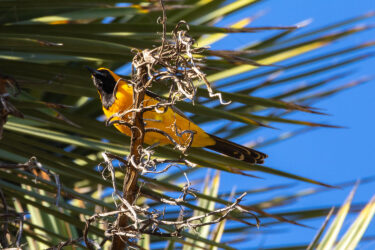
Image credit: Maya Xu
Toucan play that game
Last spring, the Stanford Birdwatching Club and its counterpart at UC Berkeley, Bears for Birds, held a bird-athon. During the competition, which was judged on the honor system, each team had 24 hours to find as many species as possible on their respective campuses. Among the species the Stanford team spotted were California quails, great blue herons, Eurasian collared doves, American goldfinches, raptors such as white-tailed kites, Cooper’s hawks, bald eagles, turkey vultures, and great horned owls, and several water birds, including gadwalls and greater yellowlegs.
“If you notice poop stains on the pavement under a tree on campus, look up – you might see a Black-crowned Night-Heron!”
—Adam Burnett
Maya Xu, a junior studying biology and the club’s financial officer, said that the water in Lake Lagunita was a significant advantage for the Stanford team.
“The lake was full this year, so there were a lot more shorebirds and waterfowl that were on our campus,” Xu said, noting that the UC Berkeley campus doesn’t have a lake. “[The water] also made the vegetation around the lake a lot more lush and gave birds more access to bugs. That’s why we had so many swifts and swallows flying over the lake.”
Noah Eckman, a PhD student in chemical engineering and SBC vice president, said that Stanford’s size also gave the club an edge.
“The Dish is another huge advantage,” Eckman said. “That’s a large area with really good visibility and lots of birds of prey that will hunt there.”
In all, the Stanford birders found 91 species, beating the UC Berkeley club, which found 65.
Birding Big Game
The competition was the second bird-athon between the two clubs. The first was held in 2014 and hosted by the Golden Gate Audubon Society. Stanford won 75-64.
The clubs plan to compete in another bird-athon this fall during Big Game Week. Xu and Eckman said that the competition will likely produce different sightings due to the cooler autumn temperatures and fall migrants.
“One of the reasons birds are so attractive to so many people, including scientists, is because they’re so accessible and are very good tools for science,” Xu said. “They’re easy to access, because they live on every continent in the world, and they’re so charismatic.”
For more information, visit the club’s website.